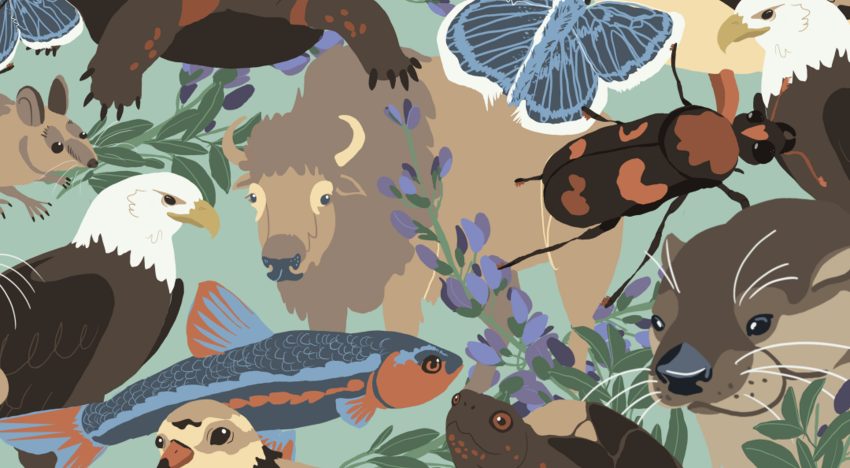In the face of escalating threats to biodiversity, the past two decades have seen remarkable efforts in wildlife conservation. From innovative strategies to dedicated conservationists, several species teetering on the brink of extinction have made stunning comebacks. This article celebrates the successes of conservation initiatives that have brought animals back from the edge of oblivion and underscores the importance of continued efforts to preserve our planet’s rich biodiversity.
The California Condor (Gymnogyps californianus)
The California condor, the largest North American land bird, faced a critical juncture in the late 20th century. With just 27 individuals left in the wild by 1987, a captive breeding program was initiated. The California Condor Recovery Program, involving collaboration between government agencies, nonprofits, and zoos, has been a resounding success. The population has rebounded, and as of recent years, there are over 400 condors, with more than half flying free in their natural habitat.
The Iberian Lynx (Lynx pardinus)
Native to the Iberian Peninsula, the Iberian lynx faced imminent extinction due to habitat loss, reduced prey availability, and diseases. Conservation efforts spearheaded by the Spanish and Portuguese governments have led to a remarkable recovery. Through habitat restoration, captive breeding programs, and reintroduction initiatives, the population has risen from fewer than 100 individuals in the early 2000s to over 800 today, marking a significant success for one of the world’s most endangered feline species.
The Black-Footed Ferret (Mustela nigripes)
The black-footed ferret, once thought extinct, was rediscovered in 1981, with a population of just 18 individuals. Facing threats such as habitat loss and a decline in prairie dog populations, which they depend on for food, the black-footed ferret was brought into captivity for breeding programs. Thanks to intensive efforts by the U.S. Fish and Wildlife Service and partners, including successful captive breeding and reintroduction programs, the population has grown to around 300 individuals in the wild, marking a significant victory for this North American native.
The Humpback Whale (Megaptera novaeangliae)
Humpback whales were relentlessly hunted for centuries, leading to a sharp decline in their populations. International conservation agreements, such as the 1986 moratorium on commercial whaling, have allowed humpback whale populations to rebound. While some populations are still considered endangered, others, such as those in the North Atlantic, have shown encouraging signs of recovery. Strict conservation measures, coupled with public awareness campaigns, have contributed to the overall improvement in humpback whale numbers.

The Giant Panda (Ailuropoda melanoleuca)
The iconic giant panda, synonymous with conservation efforts, has experienced a heartening recovery in recent years. Conservation initiatives in China, where the majority of the wild panda population resides, have focused on habitat protection and restoration, captive breeding programs, and community engagement. As a result, the giant panda was downgraded from “endangered” to “vulnerable” on the International Union for Conservation of Nature’s (IUCN) Red List in 2016. This shift reflects the success of ongoing efforts to secure the future of this beloved species.
The Chatham Petrel (Pterodroma axillaris)
The Chatham petrel, a seabird native to New Zealand, faced severe threats from introduced predators such as rats and cats, leading to a rapid decline in their population. Conservationists undertook an ambitious project to establish a predator-free habitat on Rangatira Island, providing a safe haven for the petrels. This targeted conservation approach, along with supplementary feeding and nest-box programs, has led to a remarkable resurgence of the Chatham petrel, showcasing the positive impact of strategic conservation efforts.
The Arabian Oryx (Oryx leucoryx)
Once extinct in the wild, the Arabian oryx is a testament to the success of focused conservation initiatives. Captive breeding programs initiated in the 1960s paved the way for reintroduction efforts in their native Arabian Peninsula. The Arabian Oryx Reintroduction Programme, led by the Environment Agency Abu Dhabi, has seen the species flourish. Today, there are thousands of Arabian oryx in the wild, symbolizing the potential for species recovery when conservation efforts are strategically implemented.
The stories of these animals brought back from the brink of extinction serve as powerful reminders of the impact that concerted conservation efforts can have on biodiversity. While these successes are cause for celebration, they also underscore the importance of continued dedication to preserving our planet’s rich tapestry of life. The collaboration between governments, conservation organizations, communities, and individuals demonstrates that, even in the face of immense challenges, positive change is possible. As we move forward, let these success stories inspire us to work collectively towards a more sustainable and harmonious coexistence with the diverse species that share our planet.

